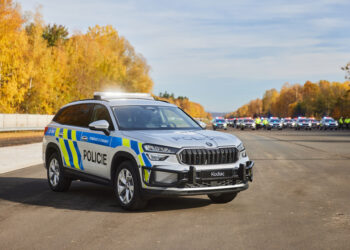Tires are composed of various layers of fabric, rubber, and steel cords. They are crucial for the dynamics, efficiency, comfort, and driving safety as they constitute the point of contact between the vehicle and the road, supporting the generated forces.
They are wear components that should be regularly replaced, with an average lifespan of 30,000 to 60,000 km. The minimum legal tread depth is 1.6 mm.
The components should be chosen based on the characteristics specified in sections X.1 and X.2 of the registration certificate, the predicted weather conditions during their use, and other aspects to consider. Therefore, it is advisable to consult the tire sidewall markings when replacing them.
What do the tire sidewall markings mean?
The markings on the sidewall are standardized in the EU and serve to differentiate the following aspects.
Dimensions
- Width. Indicates in millimeters the distance between two opposite points on the left and right sidewall. Passenger car tires typically have a width ranging from 125 to 335 mm.
- Aspect ratio. Indicates the percentage ratio of the sidewall height to the width.
Example: A tire with an aspect ratio of 55 has a sidewall height that corresponds to 55% of its width.
- Rim diameter. Indicates in inches the distance between two opposite points on the rim flange. This value typically ranges from 10” to 20”.
Example: A tire with the size 225/45 R17 has a width of 225 mm, an aspect ratio of 45%, and a diameter of 17”, and it is of radial type (R).
Find more information about 225/45 R17 tires at auto-doc.pt
Resistance
- Load index. The numerical value informs about the tire’s resistance, indicating the weight it can support when inflated to a standard pressure. There are sometimes additional designations such as “Extra Load” or “Reinforced”, which attest to extra resistance. The supported weight is listed in kilograms.
Example: A load index of 90 indicates that the component can support 600 kg when inflated to the standard pressure.
- Speed index. The letter indicates the maximum speed at which the component can safely be subjected to. The speeds are listed in km/h. The manufacturer guarantees that continuous driving effort is supported below the maximum speed and at an appropriate pressure and load. Depending on usage, it may be important to consider that driving above 210 km/h causes a percentage reduction in the load index regarding tires with a maximum speed above 210 km/h, namely tires with V, W, and Y indexes.
Example: A tire with an “N” index is designed for a maximum speed of 140 km/h. Whereas a “Y” tire can support speeds up to 300 km/h.
Consult more information about tire parameters at auto-doc.pt
Usage conditions
- Suitability for snow and ice use. The presence of the “Alpine” symbol, a mountain with a snowflake, attests to suitability for negative temperatures, ice, and snow on the road.
- Suitability for snow and mud use. The presence of the “M+S” symbol indicates suitability for snow and mud on the road.
Constructive aspects
- Tread direction. Mounting indication; necessary when the tread pattern requires a defined direction of rotation.
- Wear indicator. It is present at various points on the tread and allows visual verification of its height. The location of the indicators may be indicated by the marking “TWI” (Tread Wear Indicator) on the sidewall.
- MFS. Attests to the presence of a rubber strip for rim protection.
- Run-Flat. Vehicles equipped with this type of component do not immediately lose their ability to travel if a puncture occurs. Manufacturers use distinct markings to indicate this feature.
- Construction type. This aspect refers to the arrangement that the layers of the carcass assume. The layers can be arranged radially “R” or diagonally “D”. Currently, the use of radial tires is the norm, and the use of the second type is practically restricted to historic cars.
- Tire tube indication. Generally, modern tires do not have inner tubes and are indicated by the “tubeless” marking, which means “without inner tube” in English.
- Retreading. It is generally indicated by the presence of the letter “R” or the marking “Retread” in English.
Homologation and manufacturing data
- Homologation marking. Certifies compliance with various standards in the EU.
- Suitability for a specific car brand. Some tire manufacturers specifically indicate the suitability of their product for certain car brands.
- DOT number. Indication of the manufacturing period. The penultimate two digits indicate the production week, and the last two digits indicate the year.
Please note that the above text is purely informative and does not replace advice from an expert.










